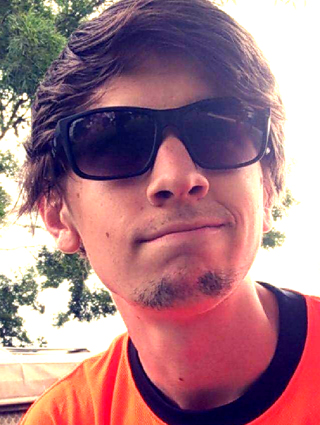
Remembering Russell
Saturday, September 29, 2018
There will be a graveside remembrance for Russell Stacpool this Sunday (Oct. 7) from 12 Noon. It will be one year since Russell died.
“There will be a esky of Coronas waiting for anyone that wants to have a drink with Russell and me at the Yea Cemetery,” says Jacky Gilbee (Stac-pool), mother of Russell.
“I’m also seeking support for our own World Suicide Awareness Walk here in Yea for all people of the Murrundindi Shire to attend held every year on or around September 10,” says Jacky.
“Closest walk to here is Woodend which I attended. It is well run and great support from all who attended.
“The next closest is Melbourne, then Albury, way too far for residents of the Murrindindi Shire.”
Suicide is a complex human behaviour that cannot easily be predicted; a range of factors has been shown to contribute to it.
From all the evidence the conclusion is that there is no single reason to explain why a person ends their life.
There are complex, multiple factors involved in suicide and suicidal behav-iour.
The Australian Bureau of Statistics figures released last year say there were 2866 deaths registered as suicide, nearly eight per day.
This is greater than the road toll.
There were 2151 men (75 per cent), 715 women (25 per cent).
The highest rate remains males aged 85 and over, followed by men aged 30-34, then males 40-45.
Many children lose a father to suicide.
Suicide is the leading cause of death for people aged 15-44.
Aboriginal and Torres Strait Islander people are twice as likely to die by suicide than non-indigenous people.
In Victoria, in 2016, there were 622 deaths registered as suicide.
Research undertaken by the Centre of Adolescent Health and others has demonstrated thre factors in particular that stand out as antecedents of suicide in the young.
They are:
• Prior attempt or deliberate, severe self-harm.
A past history of attempted suicide has been shown to be a strong predictor of future death by suicide.
There is evidence to show young people engaging in severe self harm are also at higher risk of suicide.
• Mental illness.
Mental illness, in its broadest sense, includes emotional, psy-chological and behavioural disorders of which depression is the most common.
Mood disorders have consistently been found to be associated with suicidal ideation, attempts and completed suicide.
• Drug and alcohol abuse.
Many studies have found higher rates of suicide among those with alcohol and/or substance abuse issues.
Many of the physiological, psychological and social effects of severe alcohol abuse (relationship breakdown, disruption of social ties, impairment of work performance and coping skills, lowering of normal restraints on bheaviour, increased impulsiveness and depresion) would reasonably be expected to increase the likeli-hood of suicidal behaviour.
•
Suicideline: 1300 651 251
Lifeline: 13 11 14
Griefline: 03 9935 7400
Mensline: 1300 789 978
KidsHelpline: 1800 551 800
Compassionate Friends Country: 1800 641 091

